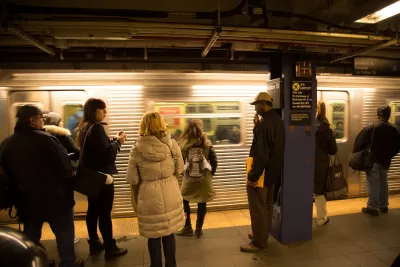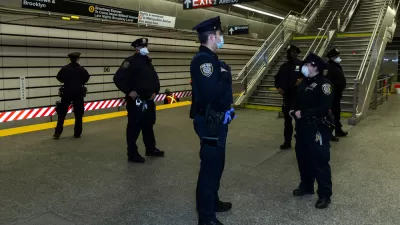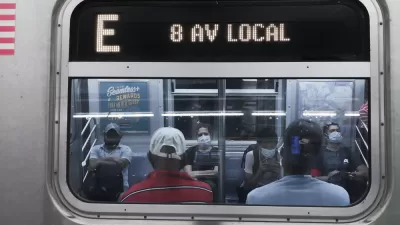Public transit systems in major U.S. cities are starting to focus on non-rush hour travelers as pre-pandemic commuting patterns shift and transportation needs change.

“The new normal for big-city transit agencies is the off-peak rider,” asserts Alissa Walker in Curbed. “The same numbers of people aren’t flooding into central business districts every weekday, but ridership for many agencies has surged on afternoons and weekends.”
Walker continues, “Existing MTA schedules specifically fail workers who have shift or service jobs that don’t follow nine-to-five commuting patterns, according to the ‘Round the Clock is the New Rush Hour’ report by the City Comptroller’s Office.”
These off-peak riders are the people the MTA had in mind when it announced a four-phase plan to increase off-peak service by 2024. The service expansion will start in July with weekend enhancements on three lines — G, J, M — selected because their ridership trends are already demonstrating faster recovery compared to elsewhere on the system.
On the question of whether improving off-peak service would help the agency’s struggling bottom line, Walker writes, “Transit expenditure expert Alon Levy estimates increasing MTA service to six minutes or less systemwide could increase ridership by 15 percent,” though that may not directly translate into higher revenue.
Making New York City transit faster, better, and safer is necessary but not sufficient for bringing back ridership and pulling the MTA back from its fiscal cliff. Walker notes that Gov. Hochul’s state budget also includes a new payroll tax slated to bring over $1 billion in new annual funding for the MTA, and $35 million dedicated to improving off-peak service.
FULL STORY: The Off-Peak Rider Is the Future of the Subway

Alabama: Trump Terminates Settlements for Black Communities Harmed By Raw Sewage
Trump deemed the landmark civil rights agreement “illegal DEI and environmental justice policy.”

Planetizen Federal Action Tracker
A weekly monitor of how Trump’s orders and actions are impacting planners and planning in America.

The 120 Year Old Tiny Home Villages That Sheltered San Francisco’s Earthquake Refugees
More than a century ago, San Francisco mobilized to house thousands of residents displaced by the 1906 earthquake. Could their strategy offer a model for the present?

Opinion: California’s SB 79 Would Improve Housing Affordability and Transit Access
A proposed bill would legalize transit-oriented development statewide.

Record Temperatures Prompt Push for Environmental Justice Bills
Nevada legislators are proposing laws that would mandate heat mitigation measures to protect residents from the impacts of extreme heat.

Downtown Pittsburgh Set to Gain 1,300 New Housing Units
Pittsburgh’s office buildings, many of which date back to the early 20th century, are prime candidates for conversion to housing.
Urban Design for Planners 1: Software Tools
This six-course series explores essential urban design concepts using open source software and equips planners with the tools they need to participate fully in the urban design process.
Planning for Universal Design
Learn the tools for implementing Universal Design in planning regulations.
Clanton & Associates, Inc.
Jessamine County Fiscal Court
Institute for Housing and Urban Development Studies (IHS)
City of Grandview
Harvard GSD Executive Education
Toledo-Lucas County Plan Commissions
Salt Lake City
NYU Wagner Graduate School of Public Service





























